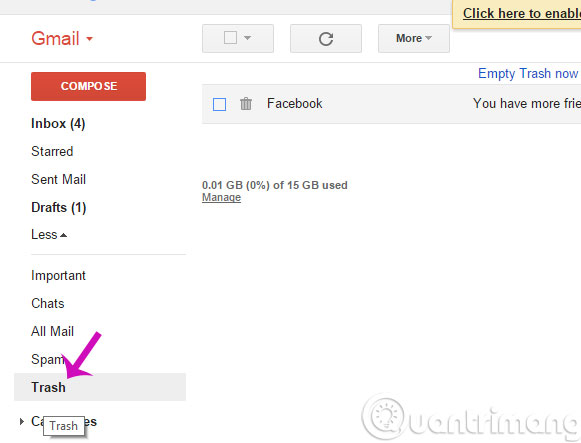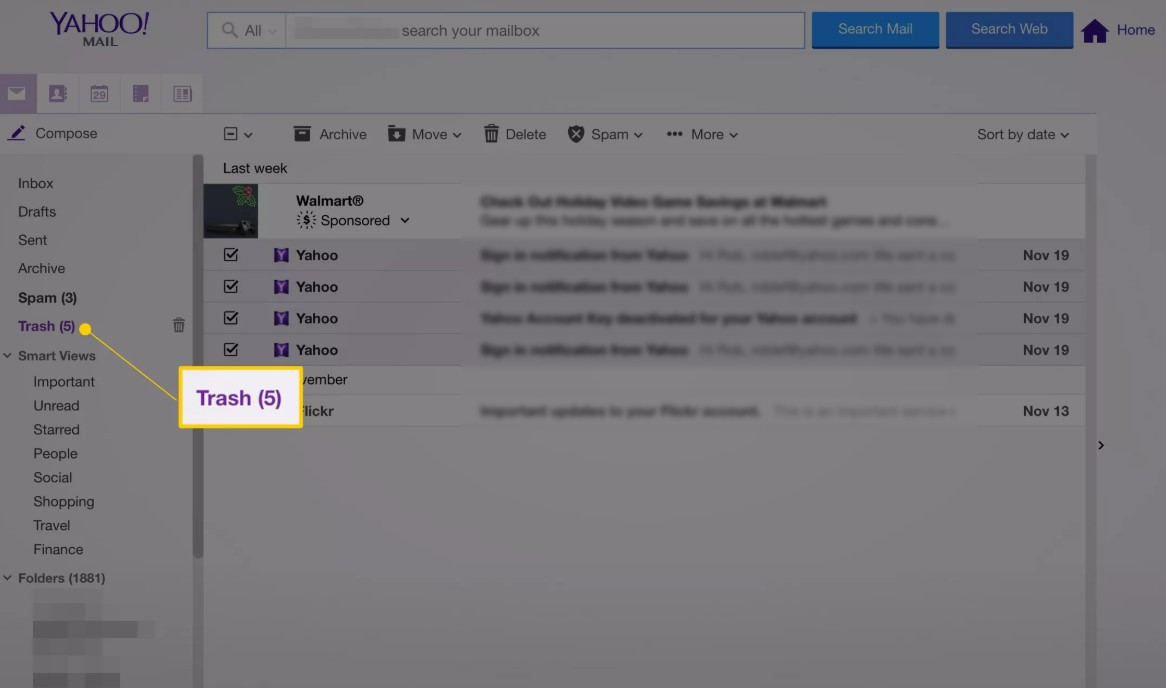
Step 3: Disable the ‘System Integrity Protection’ by inserting the command csrutil disable and hit Return.

Step 2: Click the ‘Utilities’ tab on the top and select ‘Terminal’ from the dropdown list.
#How to recover deleted files from trash gmail mac
This will boot your Mac in Recovery Mode. Step 1: Shut down your Mac and hold Command + R keys while pressing the Power button. Follow the below steps to recover deleted files on Mac using the Terminal app: Terminal is accessible in Recovery Mode and you can use it to recover the data even when macOS booting is not feasible. However, the method is useful only if your Mac has macOS Catalina or a later version. The Terminal application provides a command-line interface using which you can perform any operation on your Mac system. If you have not enabled this feature, then the method will not work for you.ģ. Further, you need to take the backup on an external hard drive. Note: The Time Machine is not a default option. Select a backup that you want to restore. Step 4: On the right side of the window, the timeline appears. Step 3: Locate and choose the files you need to restore.

Step 2: Open ‘Launchpad’ from the Dock and click on Time Machine. Step 1: Connect the backup drive created by Time Machine to your Mac. Here’s how you can recover deleted files on Mac using the Time Machine app: It uses a secondary device to create the backup of your data. Time Machine is a very useful application for backup and recovery of files. Recover Deleted/Lost Files using Time Machine Backup

When a file is temporarily deleted using the ‘Delete’ button on the keyboard or the ‘Delete’ option in the menu, it is sent to the Trash. The methods discussed here are the most accurate and effective to recover lost files on Mac. This post will discuss the different data loss scenarios and the methods to recover the lost data using the in-built features of Mac systems and third-party software. Every Mac user encounters data loss scenarios at some point in time.


 0 kommentar(er)
0 kommentar(er)
